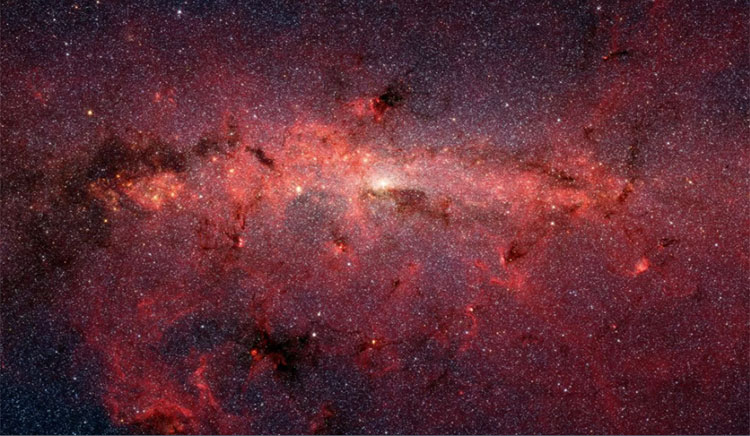The Milky Way might be filled with toxic grease
Coiled between the dust, soot and electromagnetic radiation of stars in the Milky Way is a toxic oil and grease mess.
This can be seen as 'space grease' - essentially a gaseous aliphatic hydrocarbon bond , leaking into empty space from brilliant stars, and can act as a chemical component. Important learning for the formation of new stars and planets - according to astronomers' explanation.
Exactly how much grease is clinging to the Milky Way? The scientific world cannot know for sure, but a new article published in the Monthly Notices Magazine of the Royal Astronomical Society has proposed an answer on June 13 that: many to enough to completely destroy the spacecraft shield.

Looking closely, the dust in our Milky Way might be full of "space grease".(Photo: NASA / JPL-Caltech).
A group of astronomers from the University of New South Wales (UNSW, Australia) and Ege University (Turkey) said: The amount of grease absorbed in the space of the Milky Way might be five times larger than those of the Milky Way. previous estimates. By creating a simulated representative space in the laboratory and comparing its composition with previous observations of the Milky Way, the team found that there could be about 11 billion trillion trillions of tons. (corresponds to 11 or 33 zeros) of viscous carbon molecules - equivalent to 40 trillion trillions of butter packets - in our galaxy.
However, 'surely you will not want to spread this type of grease on toast toast' - Tim Schmidt, professor of chemistry at UNSW and the lead author of the study - claims. 'It is very dirty, toxic and is only formed in the interstellar environment, or from the laboratory' (Schmidt said that it was the solar wind that retained this grease, preventing it clinging to the solar system).
In his research, Schmidt and his colleagues looked closely at space grease by creating a number of separate liquids. To mimic the synthesis and release of gases into the atmosphere by stars, the team sought to expand carbon-rich plasma or ionized gases in vacuum chambers. This plasma can produce a byproduct - similar to the interstellar dust that grease and oil cling to. Using the spectral analysis method, scientists have determined the degree of absorption of some of the infrared wavelengths of the sticky dust. From that data, the team can review previous observations to determine 'how much viscous carbon is in the vision of countless stars,' Schmidt told The Guardian.
Through these observations, the scientists determined: there are about 100 spaces of oil and grease for every 1 million hydrogen atoms - about a quarter and a half of the galaxy's interstellar carbon. It is the knowledge gained about this space grease that will help scientists better understand our entire galaxy. Carbon is considered a basic construction material for life, so if you know the amount of carbon available in different forms in the interstellar environment, scientists can find clues. about the formation of other solar systems (or perhaps formed) right in the Milky Way. For Schmidt, the results of this study may be the cause of optimism.
'Interestingly, this type of organic material is integrated into the planetary system - in a very rich way , ' Schmidt said.
- Enjoy the pure Milky Way season
- Polluted lands in China
- Fun little-known facts about the Milky Way
- Each year, 85 thousand tons of grease, chemicals and metals are released into the sea
- Monster black holes are 100,000 times bigger than the Sun.
- The reason you should not put grease on the toilet
- The lump of fat over 30 meters long blocked the United States
- The Earth's ozone layer is being filled again
- The mass of the Milky Way
- The Milky Way had 'devoured' another galaxy billions of years ago
- Poisonous open pit earthquake in the United States
- The Milky Way might contain 100 million black holes
 Van Allen's belt and evidence that the Apollo 11 mission to the Moon was myth
Van Allen's belt and evidence that the Apollo 11 mission to the Moon was myth The levels of civilization in the universe (Kardashev scale)
The levels of civilization in the universe (Kardashev scale) Today Mars, the sun and the Earth are aligned
Today Mars, the sun and the Earth are aligned The Amazon owner announced a secret plan to build a space base for thousands of people
The Amazon owner announced a secret plan to build a space base for thousands of people